Several large-format atlases are currently waiting in the Martha E. Wright Conservation Lab for their custom-made boxes to be made. Within these atlases are hundreds of beautifully hand-painted engravings of specimens observed by the scientists aboard the naval fleet charged with surveying the Pacific Ocean on the United States Exploring Expedition. This expedition, often called the “U.S. Ex. Ex.”, sought to document everything from the charting of lands and oceans, the description and illustration of flora and fauna, and the anthropological study of peoples encountered on the journey. To read more about this highly influential expedition, we recommend giving this Smithsonian article a read.
As October is the spookiest month of all, we thought we would share some of the more “frightening” animals depicted by John Cassin, an American Ornithologist, in the United States Exploring Expedition’s Atlas. Mammalogy and Ornithology, 1858.
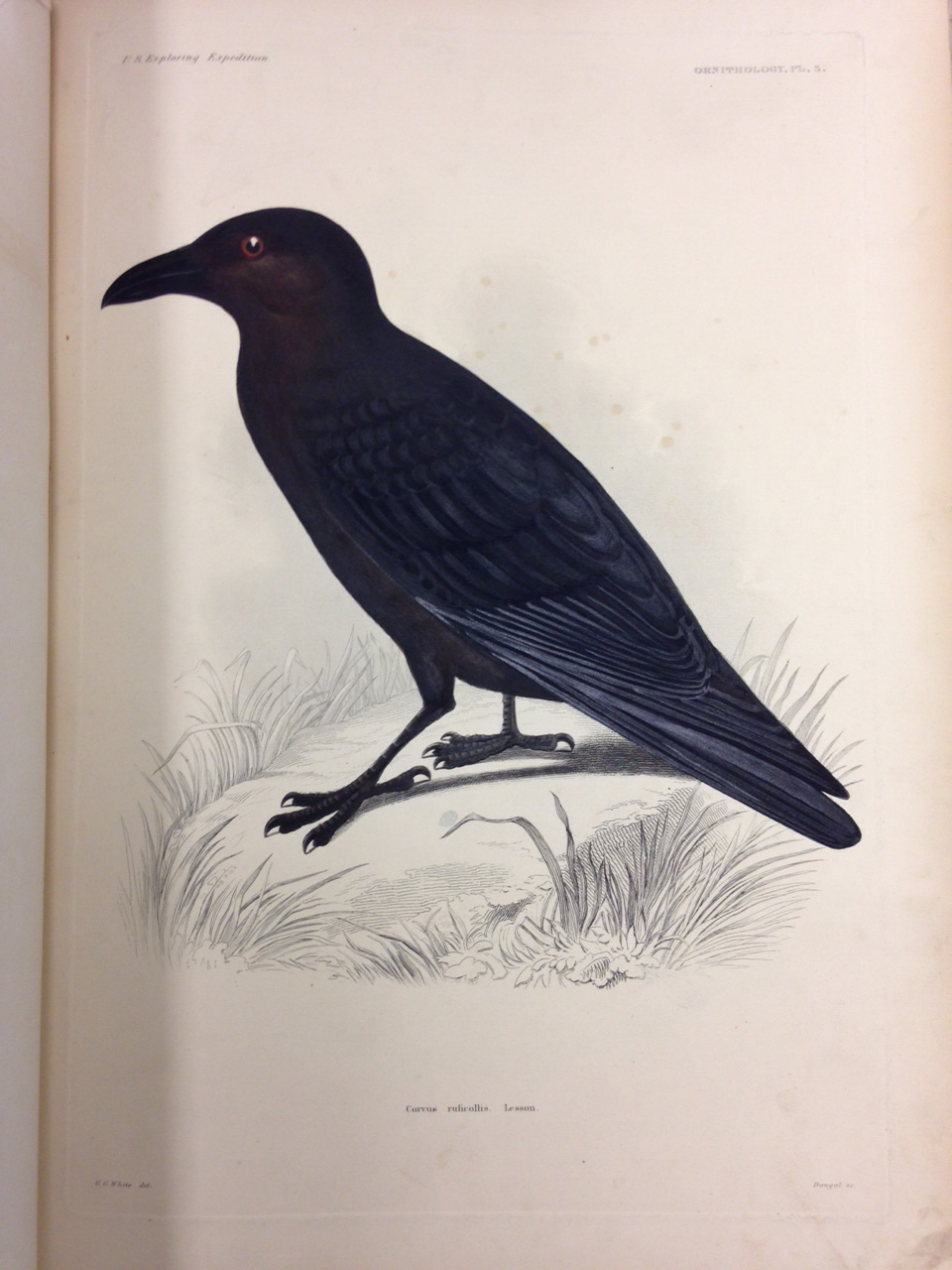
Ornithology, Plate 5: Corvus ruficollis (Brown-necked raven). – The blacks used on the feathers reflect light when viewing the plate from different angles. This is a wonderful example of how important it can be to see a real item in person for the full experience.
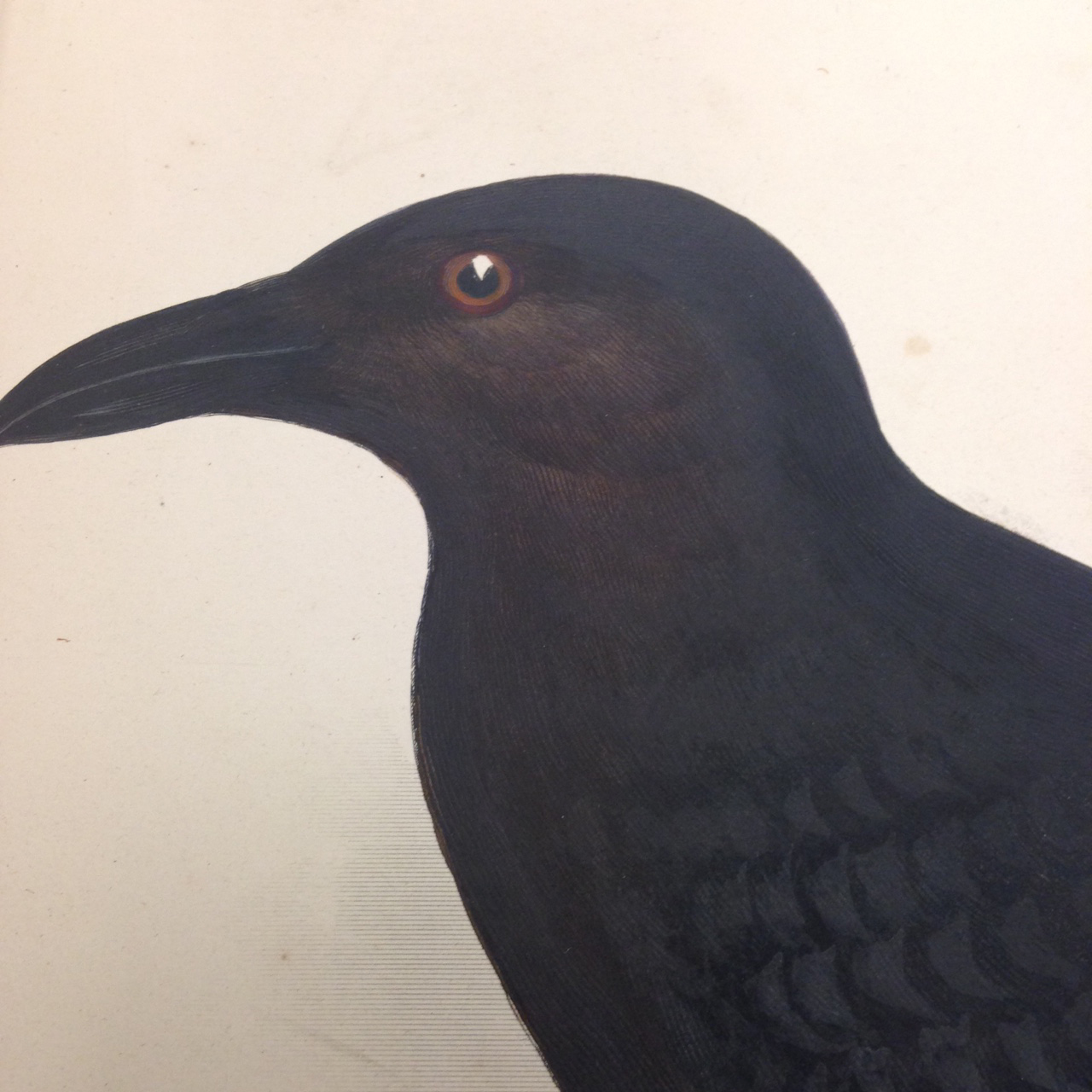
Ornithology, Plate 5: Corvus ruficollis (Brown-necked raven). – Close-up on that ever-watchful eye…No wonder Poe was wary!
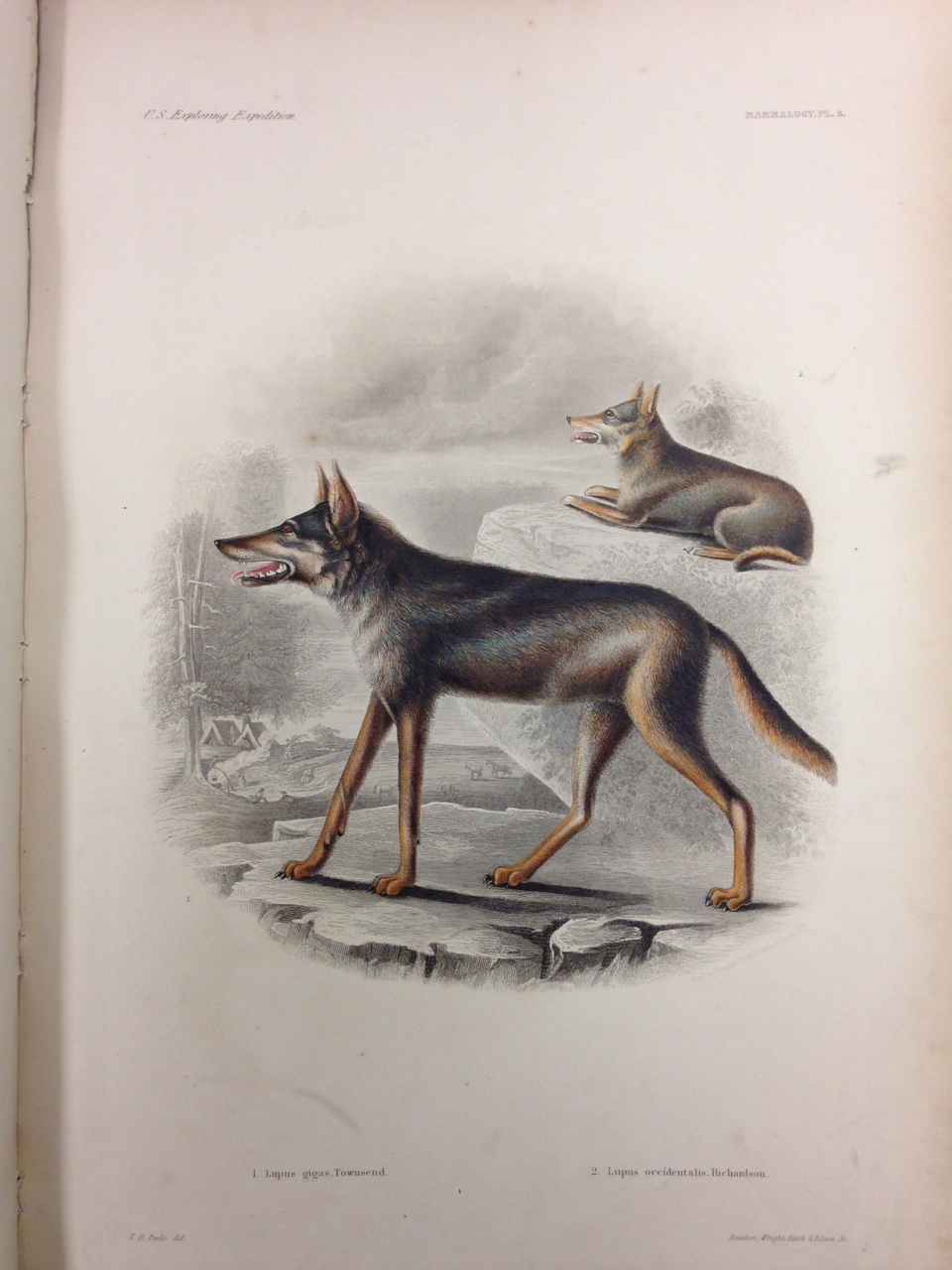
Mammalogy, Plate 3: 1. Lupus gigas. (also known as C. lupus gregoryi, Gregory’s wolf), 2. Lupus occidentalis. (Northwestern wolf). – The brown used for the eyes of these wolves has such a red hue and the teeth are so prominent that it is clear the illustrator found these wolves intimidating.
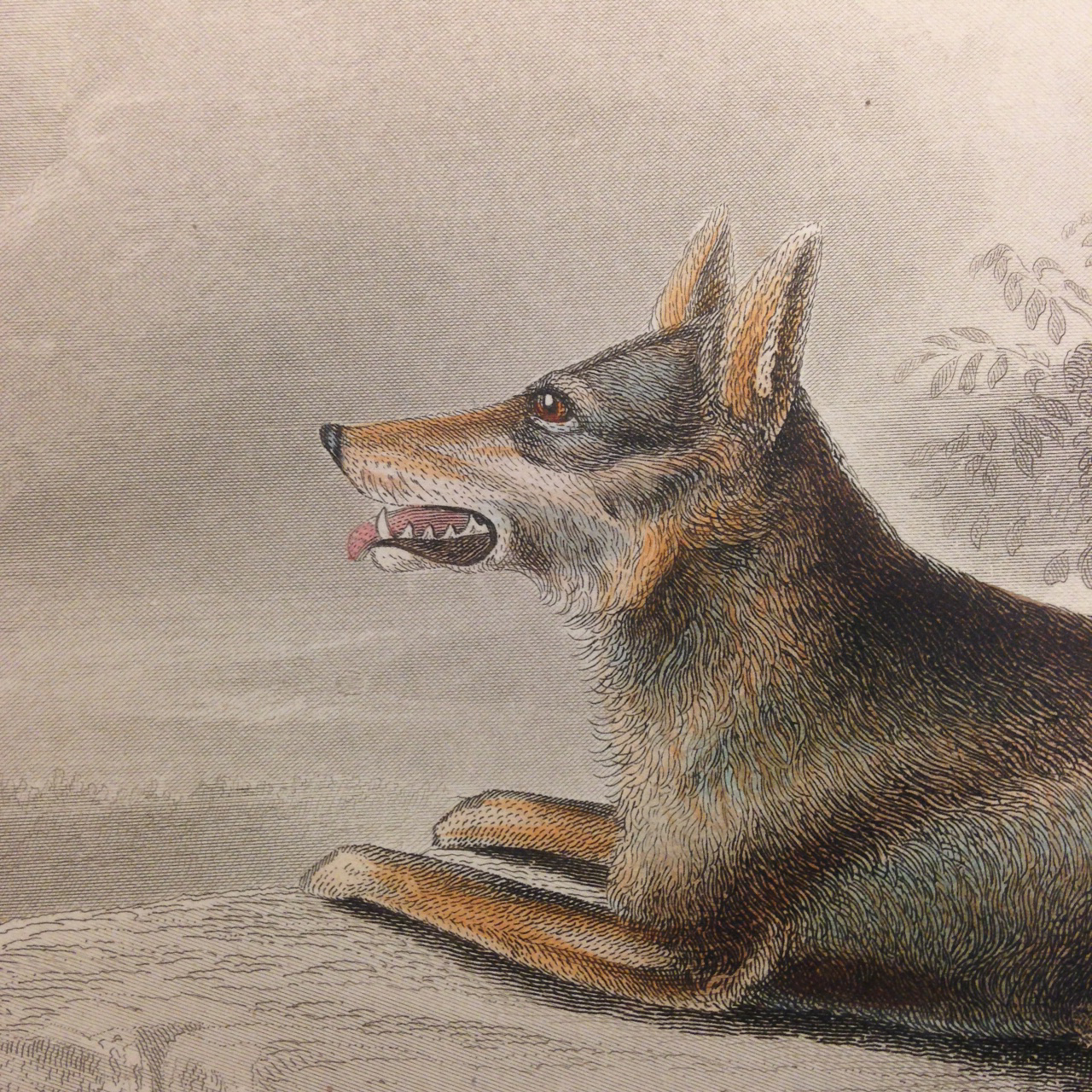
Mammalogy, Plate 3: 1. 2. Lupus occidentalis. (Northwestern wolf). – Sitting around the campfire with friends, you hear the howls and growls of wolves… Grrr….
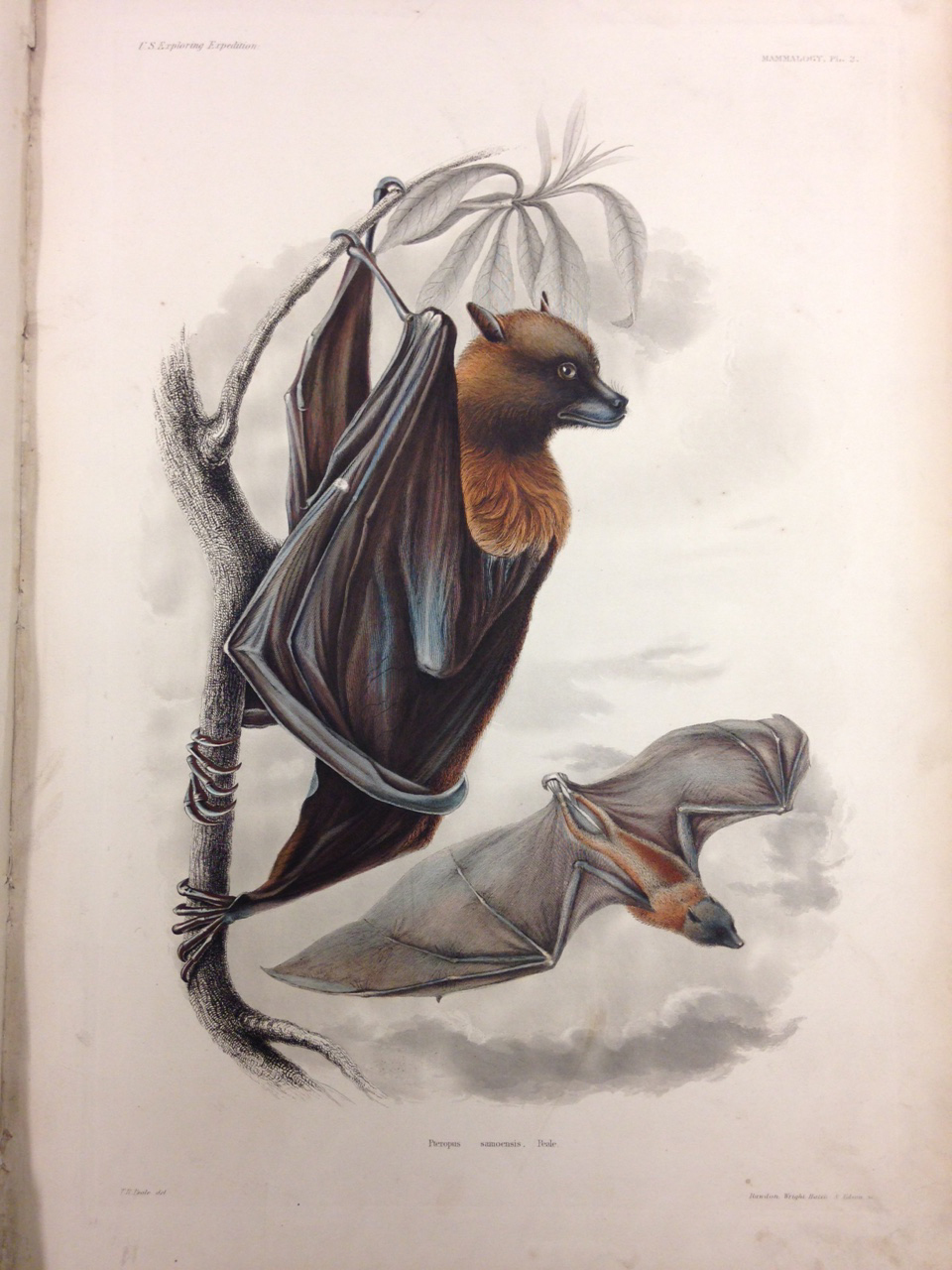
Mammalogy, Plate 2: Pteropus samoensis (Samoan Flying Fox). – They might look scary, but you can sleep easy knowing these bats are vegetarians!
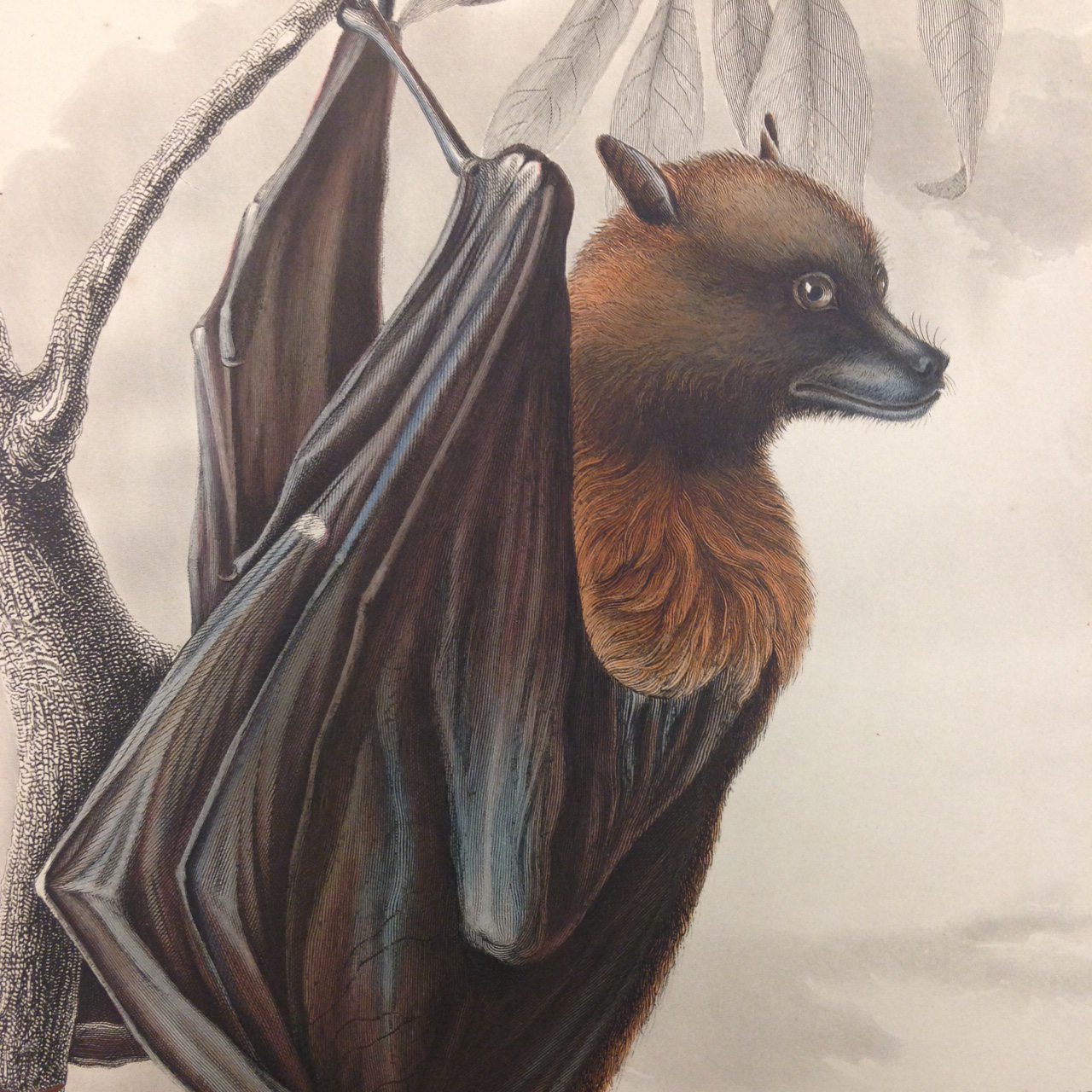
Mammalogy, Plate 2: Pteropus samoensis (Samoan Flying Fox). – Those details, though. Close observation of these plates reveals the skill and painstaking detail put into each engraved plate.
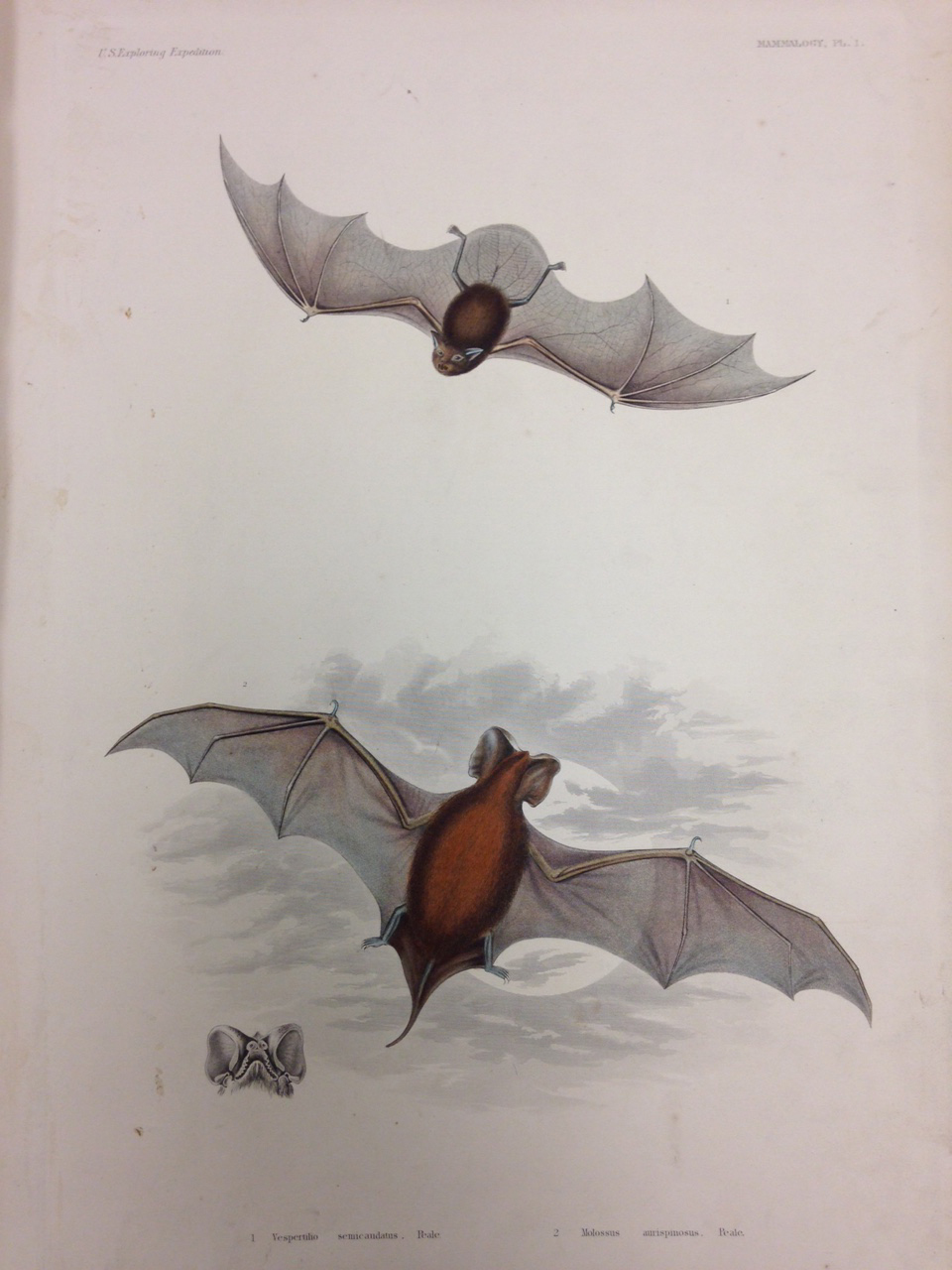
Mammalogy, Plate 1: Vespertilio semicaudatus (also known as Emballonura semicaudata semicaudata, Pacific sheath-tailed bat). – This little bat likes caves, but there appears to be no information about what they like to eat… mwahahahahaaa!

Mammalogy, Plate 1: Vespertilio semicaudatus (also known as Emballonura semicaudata semicaudata, Pacific sheath-tailed bat). – Look at those fangs… tiny instruments of carnage!
If you’re a nature lover and this volume peaks your interest, the Indiana State Library collections feature an amazing assortment of historical natural sciences books of note. This book and many other exciting volumes are available to view upon request in our reading room, so come down and have a look!
Featured volume is: Mammalogy and ornithology / by John Cassin … ; with a folio atlas. By John Cassin, 1858. ISL Call number: [Cage] ISLM P.D. 910.9 W682E V. 8B
This blog post was written by Rebecca Shindel, Conservator, Indiana State Library. For more information, contact the Indiana State Library at 317-232-3675 or “Ask-A-Librarian” at http://www.in.gov/library/ask.htm.
